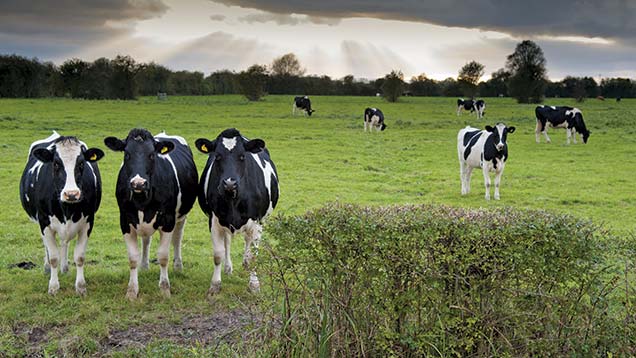Analysis: Just how bad is the dairy crisis?
 © FLPA/Rex Shutterstock
© FLPA/Rex Shutterstock No-one needs telling the dairy crash is bad news.
Farmers are sliding out of business, factories are filled with product processors can’t shift, and there is no hint of an upturn until next year. The reasons – global oversupply, Russia’s trade ban and dried-up Chinese demand – don’t need rehearsing.
The sector has form with depressions, though. Most recently there were 2009 and 2012, the latter sparking an SOS Dairy campaign and a vaunted industry code.
But this time feels different. That difference is borne out by milk prices alone. The average UK farmgate rate hit 34.52p/litre in November 2013 and slumped to 24.06p/litre this May. So far that is one-third down – and prices will fall further.
In 2009, prices slid from 27.08p/litre to 20.6p/litre over the course of eight months. The drop was not as dramatic and the market was lower at the start.
Prices in 2012 fell 3.3p/litre over seven months. They would have fallen further, were it not for the farmer campaign.
For years, British dairy farmers have not seen returns fall so far or so fast as they have these past 18 months. And more, the gap between the best and worst prices is now as wide as ever.
There is little comfort on the input side.
Plentiful world stocks of cereals and oilseeds have taken feed costs to multi-year lows. This will cushion farmers a little, but not enough to match the milk collapse.
Farmers’ feed receipts remain up on crises gone by, gobbling up margin and pushing many into the red.
Currency is adding extra pressure. The pound/euro exchange rate seems to be creeping to a pre-2008 norm. That makes British food tougher to sell abroad and imports an attractive cheaper option.
In the open European market, a strong sterling means UK farmers must suffer lower prices to stay competitive. The crises of 2009 and 2012 were softened by the pound’s relative weakness in the past seven years.
What of predictions that dairy farm numbers may halve?
We know the dairying population is in long-run decline. From 15,000 farms in England and Wales in 2005, the total dipped to fewer than 10,000 last December.
But, looking at the speed of the year-on-year fall, it seems there is no simple link with a single market crash. The rate was moving towards zero until 2013 – a period which takes in the past two depressions. Since 2013, the pace of shrinkage has picked up again. An argument could be made that UK agriculture plc was stabilising with the comfort of a favourable exchange rate (see above).
It might be that bigger economic factors hit farm numbers more than a volatile market moment. While we have seen almost 200 producers quit dairy so far this year, it is too early to tell what the final sum will be.
The length of the downturn may mark out this crisis.
EU milk quotas were abolished in April, leaving European farmers to produce as much as they wanted. An important brake on world dairy production was removed.
This influenced the 2014 crash – EU output ramped up in anticipation only to be hit by demand shocks – and will affect the recovery. A big overhang of dairy stocks is depressing the market, while most countries are still making as much milk as they were last year.
An early-2015 bubble aside, world dairy prices have been scraping seven-year lows since December. Now analysts don’t pick a major turnaround until 2016, and not until after Europe’s spring peak.
The current crash is different as it is the first in a new dairy world.
The data for the charts were curated by the good folk of AHDB Market Intelligence. Original sources include Defra, the Food Standards Agency, Promar International and the EU Commission.
